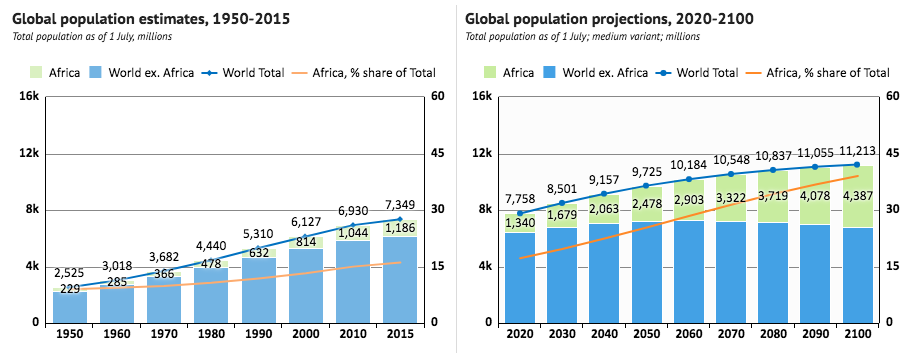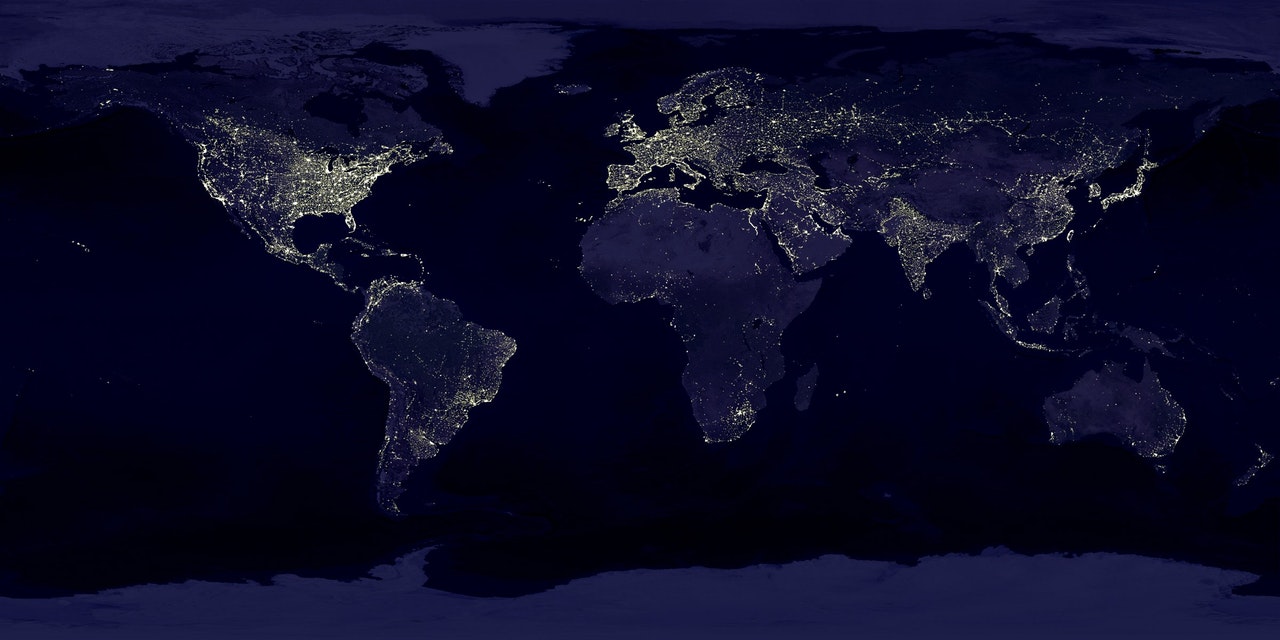In a perfect world, where access to technology and the wealth are equally distributed, the GDP of each country would be proportional to its population. In the real world that relationship exists on average (see the dot charts below) but with significant deviations from the trend. Many developed countries, being relatively less populous than their developing counterparts, have high levels of GDP, while the GDPs of less-developed countries, especially in Africa, are disproportionally low.
- According to the UN DESA baseline scenario, by the year 2100 Africa will become the world’s most populous region, accounting for 39 percent of the global population and replacing Asia as the key driver of global population growth.
- More than half of global population growth between 2015 and 2050 is expected to occur in Africa, and after 2050 Africa is projected to be the only major world region with a continually growing population.
- Nigeria is expected to remain the most populous African country, reaching 752 billion in 2100, according to projections by the UN. The Democratic Republic of the Congo – one of the world’s poorest countries – is expected to become the second most populous African country.





